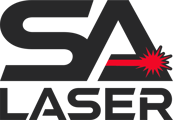Combine and Separate Objects for Seamless Editing
The Group tool combines multiple objects into a single unit, while the Ungroup tool separates grouped objects back into individual components. These features allow for precise control over collections of objects in your Workspace, making design and editing more efficient.
Quick Reference: Grouping and Ungrouping

- Group Objects
- Shortcut:
- Windows:
Ctrl + G - Mac:
Cmd + G
- Windows:
- Shortcut:
- Ungroup Objects
- Shortcut:
- Windows:
Ctrl + U - Mac:
Cmd + U
- Windows:
- Shortcut:
- Access Points:
- Arrange Toolbar
- Arrange Menu → Group/Ungroup
- Right-Click Menu → Group/Ungroup
![]()
Why Use Grouping and Ungrouping?
Objects in your Workspace are normally independent and manipulated individually. Grouping combines them into a single unit, preserving their relative positions and sizes during transformations such as moving or resizing.
Grouping is particularly helpful for:
- Keeping complex designs intact.
- Ensuring multi-layered objects are treated as a unit.
- Simplifying object manipulation during edits.
LightBurn's Optimization Settings allow grouped objects to be engraved or cut as a unit, with options for managing multi-layer groups.
How to Group and Ungroup Objects
Group 
- Shortcut:
Ctrl + G(Windows) orCmd + G(Mac). - Combines selected objects into a single unit for:
- Selection and movement.
- Resizing and transformation.
- Boolean operations.
- Works on mixed object types (shapes, text, images) and objects on different layers.
- Nested Grouping: Grouped objects can be combined into larger groups.

Ungroup 
- Shortcut:
Ctrl + U(Windows) orCmd + U(Mac). - Separates grouped objects into individual components.
- If a group contains nested groups, you may need to ungroup multiple times to fully separate all objects.

Identifying Grouped and Ungrouped Objects
- Ungrouped Objects: Display an animated dash pattern when selected.

- Grouped Objects: Display a dot-dot-dash pattern when selected.

Auto-Grouping
Auto-Group automatically combines shapes fully contained within another shape into a group.
Steps to Use Auto-Group
- Select shapes you want to group.
- Ensure shapes are not already grouped (
Ctrl + UorCmd + U). - Use Arrange → Auto-Group to create a group for all fully contained shapes.

Note: Shapes not fully contained or already grouped are excluded from Auto-Group.
Troubleshooting Grouping and Ungrouping
Imported Shapes
- Imported shapes are grouped by default.
- Disable Group imported shapes in Settings to prevent automatic grouping.

Limitations with Grouped Objects
The following tools cannot be used on grouped objects:
- Edit Nodes
- Trim Shapes
- Resize Slots
- Convert to Path
- Auto-Join Selected Shapes
- Close Path
- Close Selected Paths with Tolerance
- Break Apart
- Optimize Selected Shapes
Grouped objects are treated as single units with Boolean tools. Groups containing open shapes cannot be used with these tools.
Using Select Features with Groups
- Select open shapes or similar features can identify applicable grouped shapes and remove them from the group.
Tips for Efficient Grouping
- Lock Groups: Use the Lock Shapes feature to prevent accidental edits.
- Nested Groups: Grouping within groups can help organize complex designs.
- Test Auto-Group: Experiment with Auto-Group to quickly manage nested designs.
- Ungroup Strategically: Break down groups incrementally for fine adjustments.
By mastering grouping and ungrouping, you can streamline object management and enhance your editing workflow.
